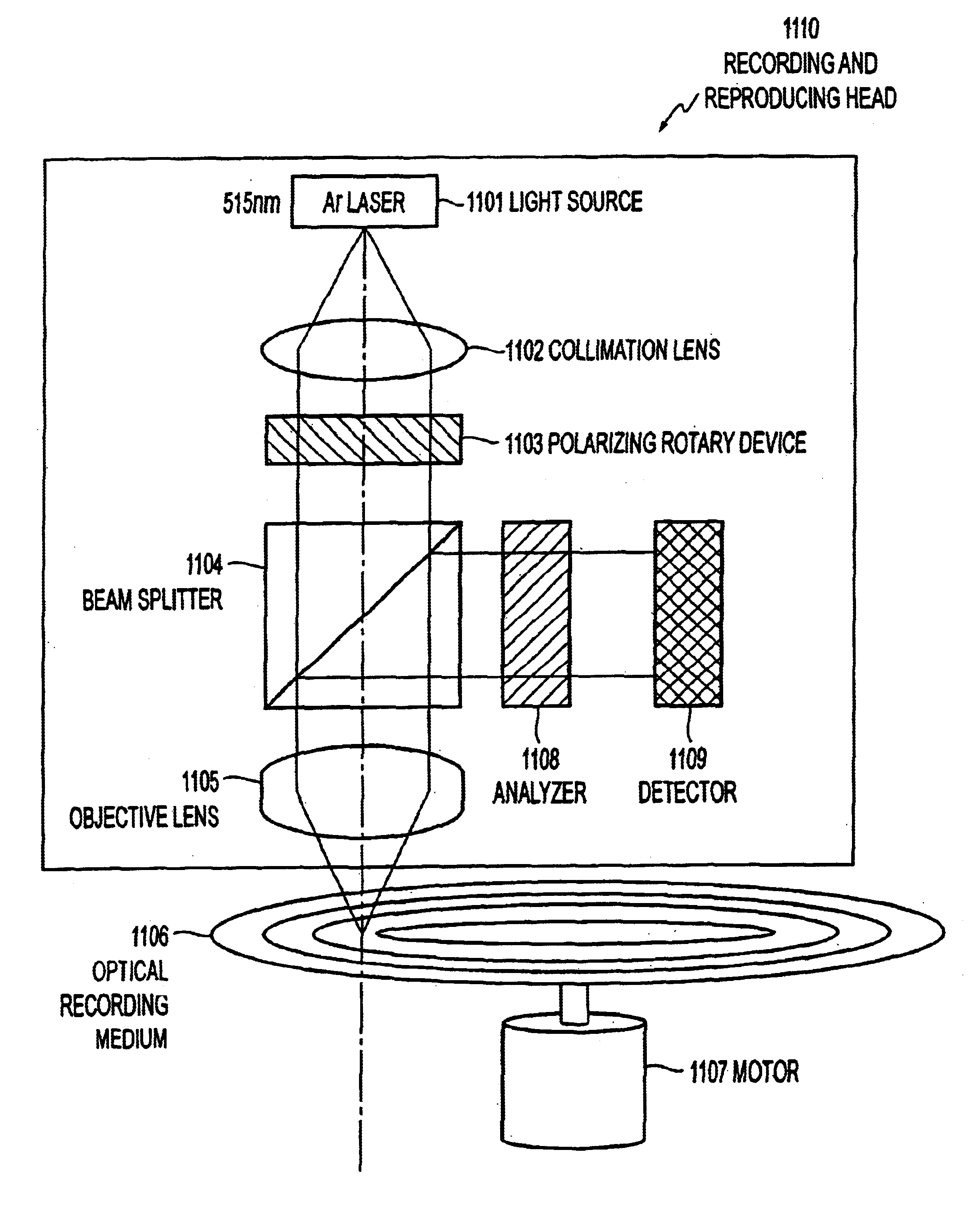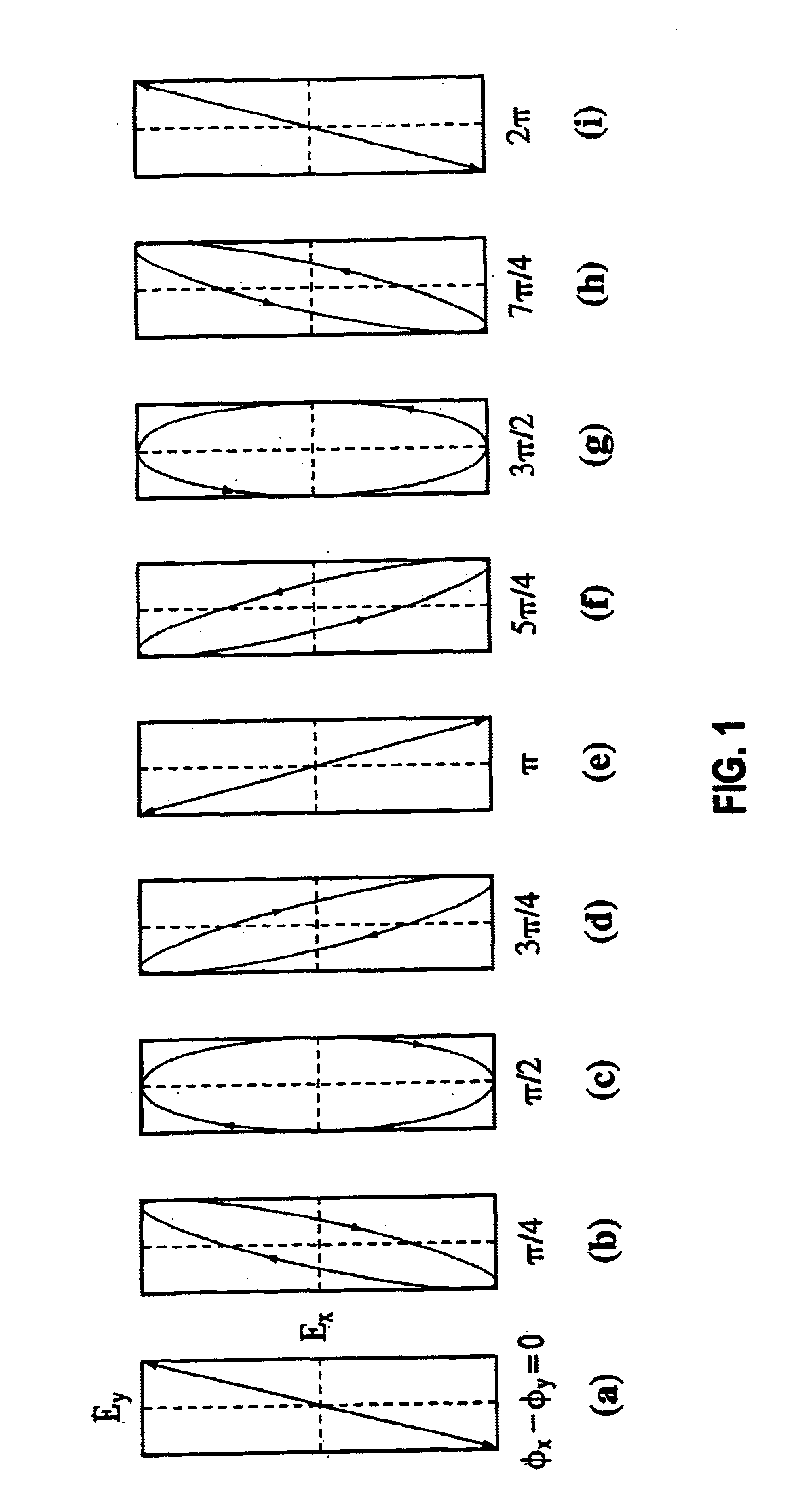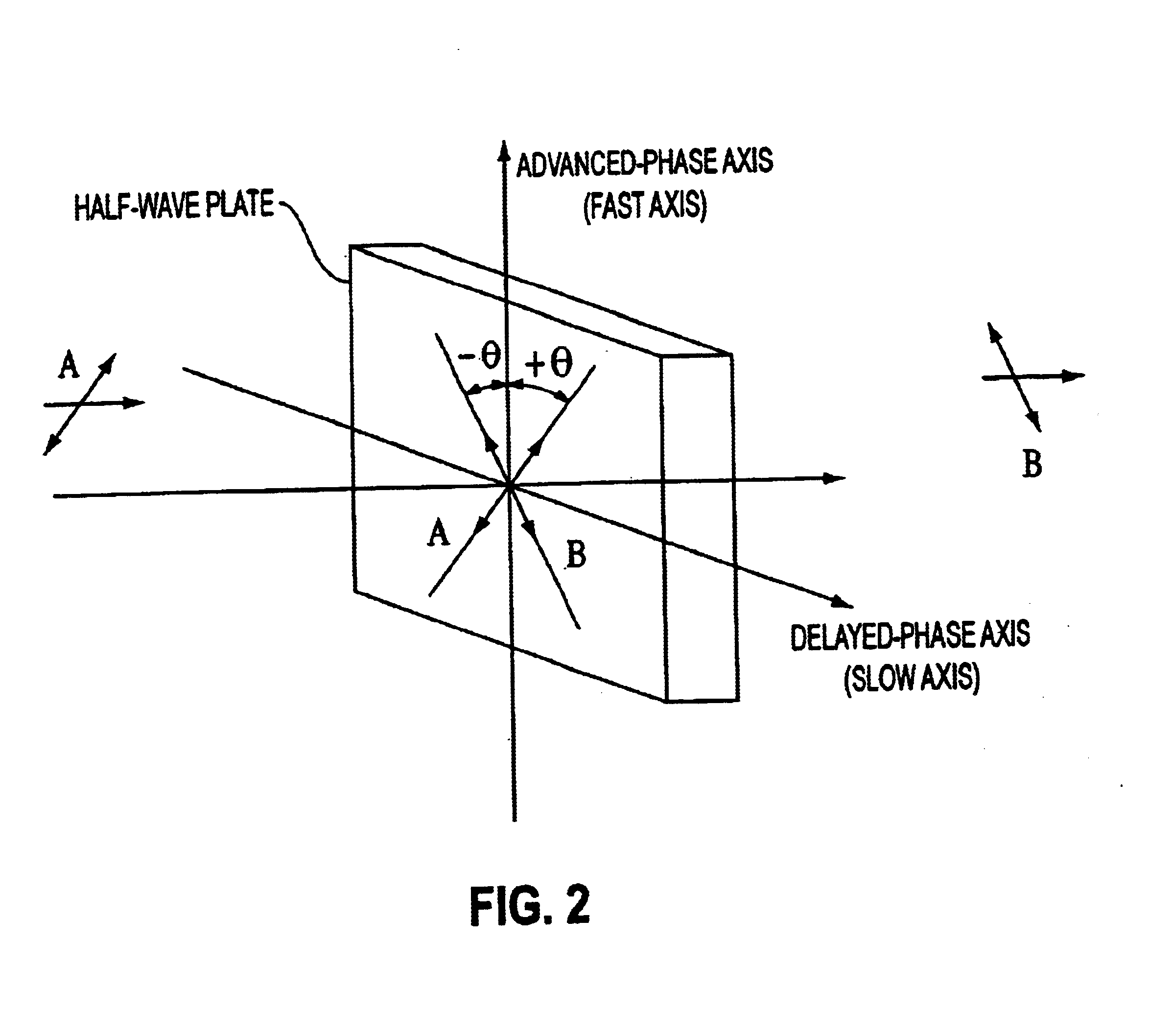Optical recording medium, optical recording and reproducing method and apparatus
a recording medium and optical recording technology, applied in the field of optical recording and reproducing methods, optical recording mediums, optical recording/reproducing/erasing methods, instruments, etc., can solve the problems of physical limit of high-density optical recording, inconvenient recording density, optical disk, etc., and achieve the effect of stable s/n ratio
- Summary
- Abstract
- Description
- Claims
- Application Information
AI Technical Summary
Benefits of technology
Problems solved by technology
Method used
Image
Examples
Embodiment Construction
[0035]Initially, a principle of a polarization angle multilevel recording according to the present invention will be described. A method of rotating a polarization angle of linearly-polarized light at an arbitrary angle will be effected as follows. Light is a kind of electromagnetic wave and may be expressed by Maxwell's equations. If a z-axis (light traveling direction) is fixed, then the electromagnetic field E of light may be expressed by the following equation (1):
E(t)={circumflex over (x)}Ex cos(ωt−φx)+ŷEy cos(ωt−φy) (1)
[0036]Here, φx and φy represent the initial phases relative to the x axis and y axis respectively. The tip end of this electric field vector E draws various orbits based on a value of a phase difference (φx−φy) between the x axis and the y axis. FIGS. 1(A) to 1(I) schematically show various orbits drawn by the tip end of the electric field E, and illustrate light polarized states obtained when the phase difference (φx−φy) between the x axis and the y axis is c...
PUM
 Login to View More
Login to View More Abstract
Description
Claims
Application Information
 Login to View More
Login to View More - R&D
- Intellectual Property
- Life Sciences
- Materials
- Tech Scout
- Unparalleled Data Quality
- Higher Quality Content
- 60% Fewer Hallucinations
Browse by: Latest US Patents, China's latest patents, Technical Efficacy Thesaurus, Application Domain, Technology Topic, Popular Technical Reports.
© 2025 PatSnap. All rights reserved.Legal|Privacy policy|Modern Slavery Act Transparency Statement|Sitemap|About US| Contact US: help@patsnap.com



